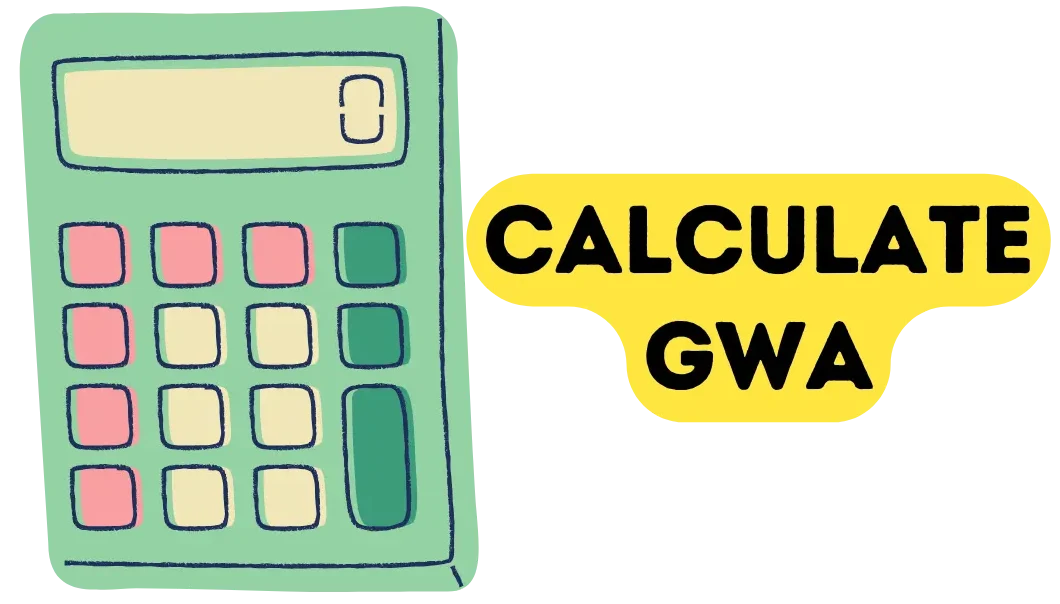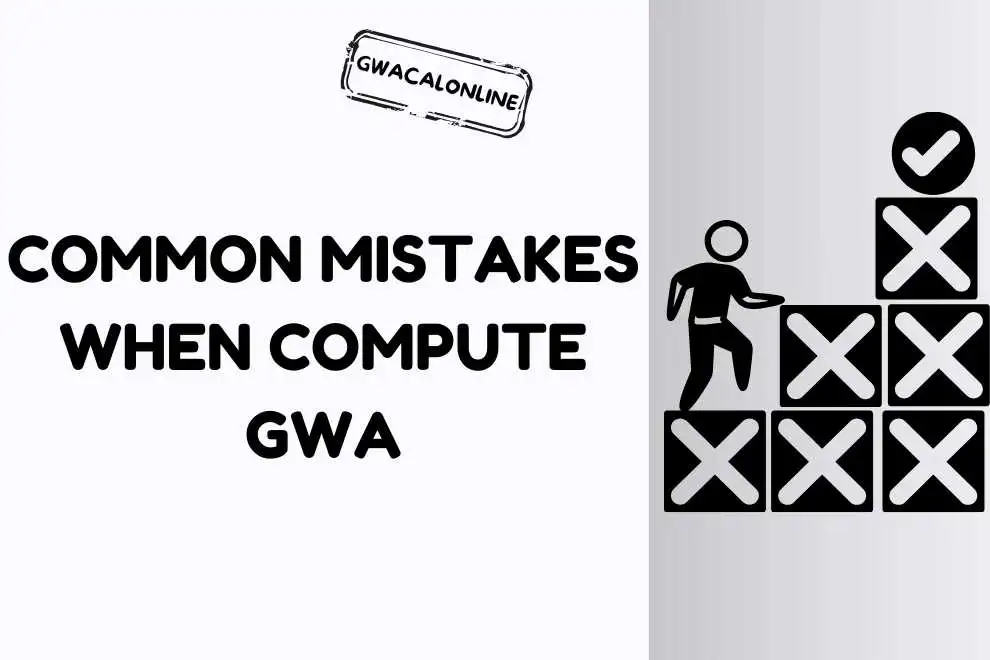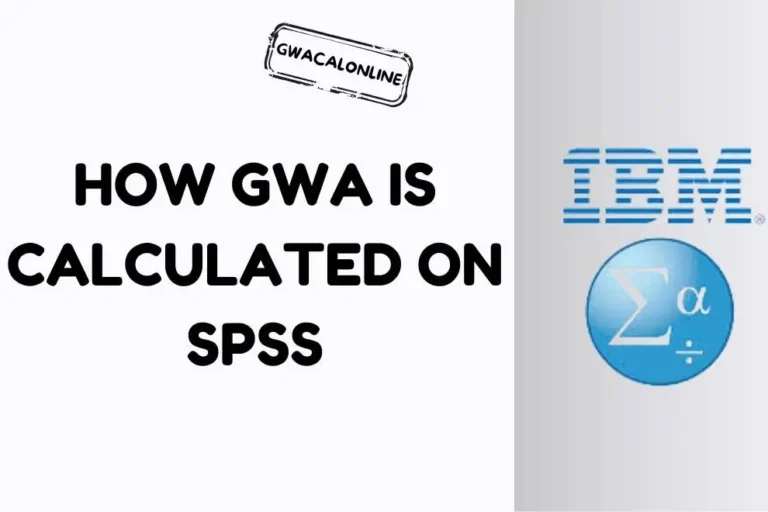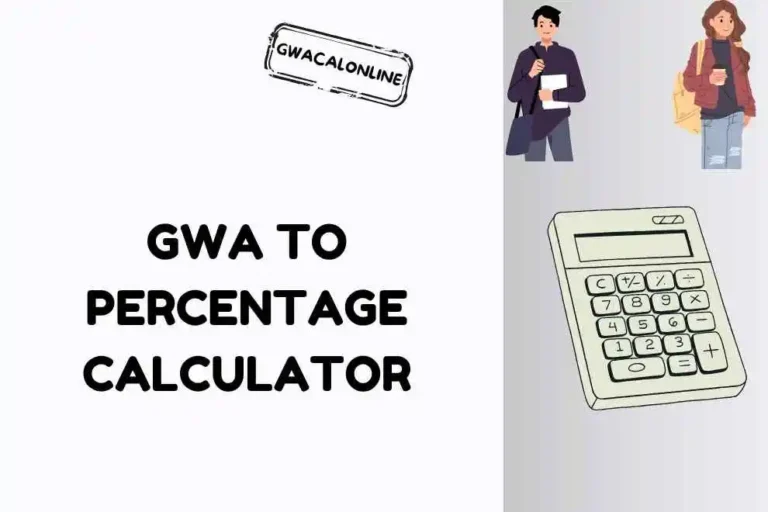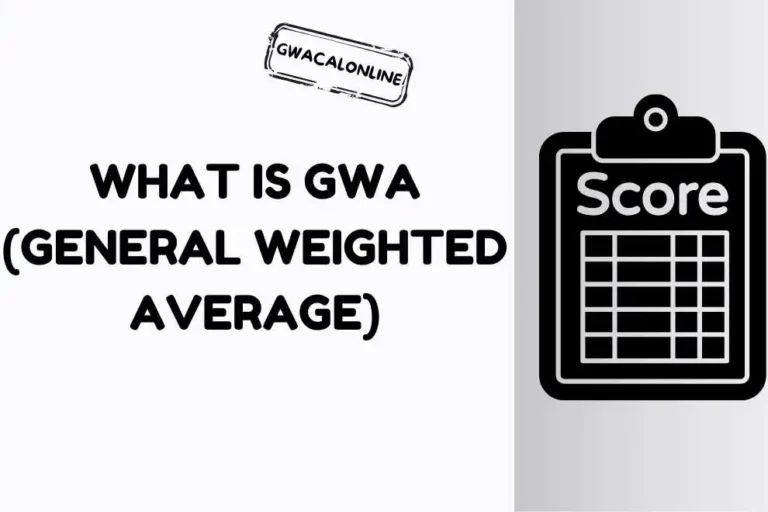Calculating your General Weighted Average (GWA) is essential for understanding your academic performance and planning your future studies. But mistakes when computing GWA is so common in students.
However, many students make common mistakes during the computation process that can lead to inaccurate results.
These errors can stem from misunderstandings of the grading system, incorrect data entry, or miscalculations.
In this article, we’ll explore the most frequent mistakes students make when computing their GWA and provide tips on how to avoid them.
By being aware of these pitfalls, you can ensure that your GWA accurately reflects your academic standing.
Misunderstanding the Grading Scale
One of the most common mistakes in computing GWA arises from misunderstanding the grading scale used by your educational institution.
Different schools may have varying systems for converting letter grades to numerical values.
For instance, some institutions might consider a grade of “A” as 4.0, while others may assign it a different value.
Solution
Always familiarize yourself with your school’s grading scale before starting the calculation. Refer to your student handbook or consult your academic advisor to ensure you use the correct values.
Incorrectly Entering Grades and Credit Units
Entering grades and credit units inaccurately can lead to significant discrepancies in your GWA. Students may mistakenly input the wrong grade for a course or forget to include the credit units altogether.
Solution
Double-check all entries before performing calculations. It’s helpful to create a checklist of all courses, grades, and credit units to ensure nothing is missed or incorrectly recorded.
Failing to Multiply Grades by Credit Units
When calculating GWA, it’s crucial to multiply each grade by its corresponding credit units to find the Grade Points. A common error is forgetting this step or performing it incorrectly, resulting in an inaccurate GWA.
Solution
Use a systematic approach to calculations. For each course, clearly write down the grade, the credit units, and the resulting Grade Points. This methodical process can help prevent oversights.
Not Summing Total Grade Points and Credit Units Correctly
Another frequent mistake occurs in the summation process. Students may miscalculate the total Grade Points or total Credit Units, leading to an incorrect GWA.
Solution
After entering all data, take your time to carefully sum the values. It can be beneficial to use a calculator or spreadsheet software, which can help reduce the chances of arithmetic errors.
Dividing by the Wrong Total
Students sometimes divide the total Grade Points by the wrong total, such as the number of subjects instead of the total Credit Units. This mistake can significantly alter the final result.
Solution
Always remember that the GWA formula is:

Ensure you are dividing by the correct total, which is the sum of credit units, not the number of courses
Most students who are doing their research work on SPSS do not know how to calculate gwa on spss which is highly easy.
Forgetting to Account for Grades in Incomplete Courses
Some students neglect to include grades for incomplete courses or may forget to update their GWA after receiving final grades. This oversight can lead to an inaccurate representation of their academic performance.
Solution
Keep track of all courses and their statuses. If you have incomplete courses, note how they may affect your GWA once completed. Regularly updating your GWA calculation ensures that you maintain an accurate record of your academic progress.
How to avoid GWA Calculating Mistakes
Avoiding mistakes in GWA computation requires attention to detail and a systematic approach. Here are some practical steps to help you steer clear of common errors and ensure accurate calculations:
Understand the Grading Scale
Before you begin, make sure you are using the correct grading scale. Schools can have different methods of converting grades to numerical values.
Tips to Avoid Mistakes
- Check your student handbook or school’s website for the official grading scale.
- Consult with your academic advisor if you’re unsure about your institution’s system.
Double-Check Grade and Credit Unit Entries
Accurately entering your grades and corresponding credit units is critical to getting the right GWA.
Tips to Avoid Mistakes
- Make a list of your courses along with their correct grades and credit units before you start calculating.
- Use a calculator or spreadsheet for better accuracy and organization.
Always Multiply Grades by Credit Units
For each course, the grade must be multiplied by the credit units to get the Grade Points.
Tips to Avoid Mistakes
- Write down each course’s Grade Points clearly as you calculate them.
- Use a structured table with columns for the course name, grade, credit units, and Grade Points to avoid confusion.
Be Careful with Summation
Summing up your Grade Points and total credit units correctly is crucial for accurate GWA calculation.
Tips to Avoid Mistakes:
- After performing the summation, double-check your work or use a spreadsheet or calculator for automatic summation.
- If you’re calculating manually, verify each number twice before proceeding to the final calculation.
Conclusion
By following these tips and paying close attention to detail, you can avoid the most common mistakes when calculating your GWA.
Whether you’re new to the process or just want to ensure accuracy, these steps will help you compute your GWA with confidence.
Remember, careful planning, thorough checking, and understanding your institution’s grading policies are key to getting the right results every time.
